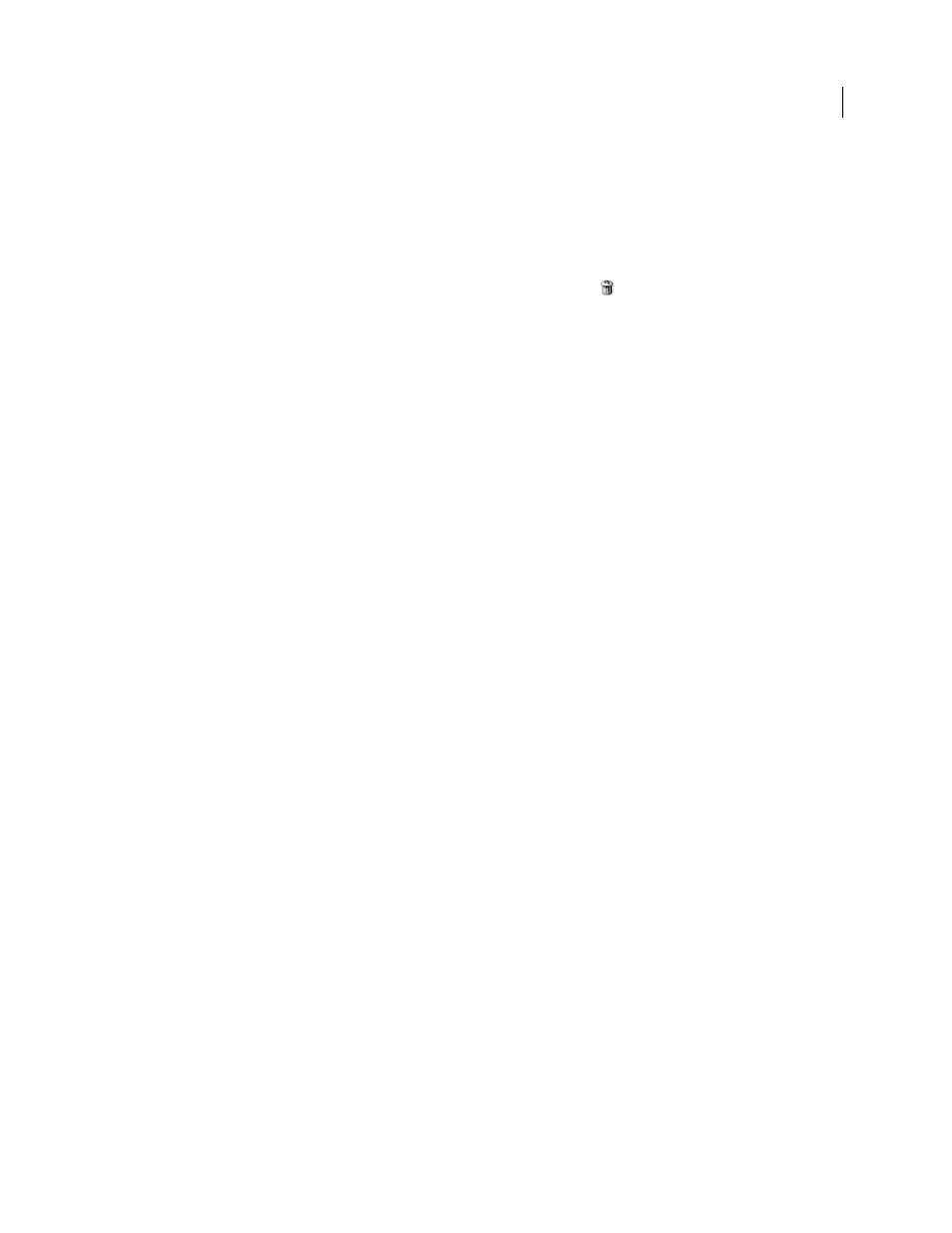Delete a layer comp, Export layer comps, Masking layers – Adobe Photoshop CS4 User Manual
Page 330: About layer and vector masks, Masking, Layers

323
USING PHOTOSHOP CS4
Layers
Last updated 1/10/2010
•
Right-click (Windows) or Control-click (Mac
OS) the caution icon to see the pop-up menu that lets you choose
either the Clear Layer Comp Warning or the Clear All Layer Comp Warnings command.
Delete a layer comp
❖
Do one of the following:
•
Select the layer comp in the Layer Comps panel and click the Delete icon
in the panel, or choose Delete Layer
Comp from the panel menu.
•
Drag it to the Delete icon in the panel.
Export layer comps
You can export layer comps to individual files.
❖
Choose File
> Scripts > Layer Comps to Files and then choose the file type and set the destination.
Note: Note, you can also export to a Web Photo Gallery (WPG), but you must have the optional Web Photo Gallery plug-
in installed on your computer. You can find the plug-in on in the Goodies folder on your installation disc.
Masking layers
You can add a mask to a layer and use the mask to hide portions of the layer and reveal the layers below. Masking layers
is a valuable compositing technique for combining multiple photos into a single image or for making local color and
tonal corrections.
About layer and vector masks
You can use masks to hide portions of a layer and reveal portions of the layers below. You can create two types of
masks:
•
Layer masks are resolution-dependent bitmap images that are edited with the painting or selection tools.
•
Vector masks are resolution independent and are created with a pen or shape tool.
Layer and vector masks are nondestructive, which means you can go back and re-edit the masks later without losing
the pixels they hide.
In the Layers panel, both the layer and vector masks appear as an additional thumbnail to the right of the layer
thumbnail. For the layer mask, this thumbnail represents the grayscale channel that is created when you add the
layer mask. The vector mask thumbnail represents a path that clips out the contents of the layer.
Note: To create a layer or vector mask on the Background layer, first convert it to a regular layer (Layer
> New
> Layer
from Background).